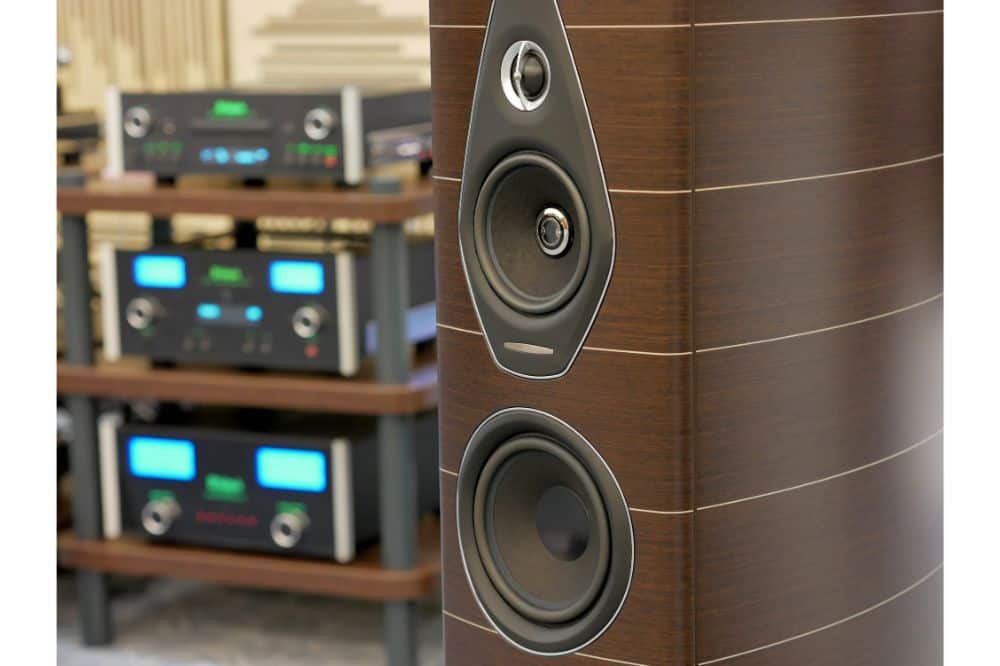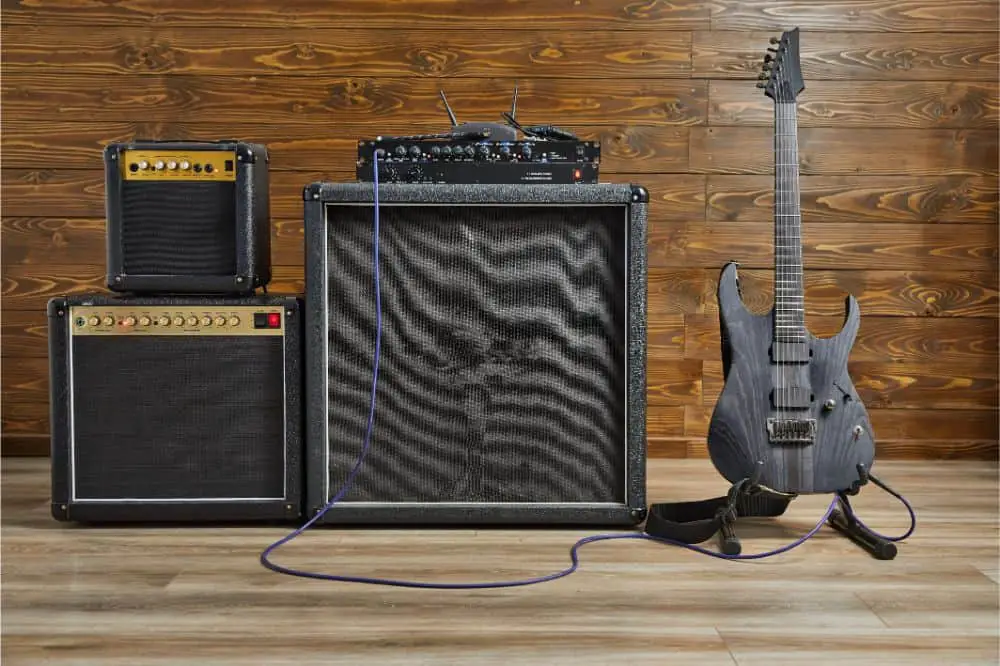Many people (casual listeners and music enthusiasts alike) prefer powered speakers over passive speakers because they are convenient and easy to use.
Plus, they already have built-in amplifiers, so there’s no need to purchase one.
That said, if you’re asking, “Do I need a preamp with powered speakers?” the answer is no.
However, there are some cases when you need a separate preamp for your active speakers, like when connecting them to a turntable.
What Is a Preamp?
A preamp is an electronic device typically built into different audio gear, from DJ mixers to consoles and computer sound cards.
Preamps can also be standalone pieces you connect to your speakers.
You’ve probably used a preamp before but weren’t fully aware of it.
Chances are, you’ve plugged a microphone into an audio interface to record. That is the single most important use of a preamplifier.
In a home theater, a preamplifier does two things.
Firstly, it handles the switching between different line levels. Secondly, it enhances the electrical signal before sending them back to the amplifier.
Boosting the signal is important for sound processing and preventing distortions, resulting in a cleaner output.
In other words, a preamp converts a weak electrical signal into a noise-tolerant audible output.
Preamp vs Amplifier: What’s the Difference?
While both preamps and amps convert weak signals into stronger signals, they have significant distinctions.
In particular, a preamp is necessary to boost weak electrical sound signals without increasing their noise.
On the other hand, an amp is needed to power sounds that are too loud to be converted through a preamp.
In technical terms, the difference between an amp and a preamp lies in the impedance level, which measures how much the speaker resists current.
A preamp usually has a high impedance, so the voltage drops fully across it. This causes weak signals to be converted into line-level signals without creating too much noise.
For this reason, preamps are often preferred by audiophiles for processing microphone recordings.
However, preamps are not appropriate for speaker-level signals.
Since the impedance level of preamps is very high, they don’t have enough power or wattage to drive a loud signal.
In comparison, amps are low impedance, so they can successfully drive any sound.
They have a voltage amplifier input similar to preamps, but they also have current amplifier output.
That said, apart from increasing the noise level of a sound signal, they can also power sounds at any volume.
Do I Need a Preamp with Powered Speakers?
If you have powered speakers, they likely have preamps installed, or they wouldn’t work.
If you are looking to enhance the volume, you may simply need to calibrate and set your listening levels.
A preamp won’t crank up the sound.
However, if you are connecting your sound system to a turntable, you might need a phono preamp in particular.
A phono preamp is one of the most important components of any vinyl playback system.
Also known as a phono stage, it amplifies and boosts the signal from your turntable to a level you can clearly hear.
Phono preamps come in all types and sizes; in fact, some are even built into components.
Many people connect their speakers to a receiver to bypass the amplifier section and only use the preamp output of the receiver.
This allows them to hook different audio sources up to their powered speakers at the same time.
Since most powered speakers only have one input, a preamplifier or mixer will allow you to connect multiple devices to them.
A preamp primarily aims to boost the signal from your turntable to a level that can be properly played through your sound system.

Preamp in Turntables
Many turntables have built-in preamps. This allows you to connect the device to a pair of speakers with a separate receiver or amplifier.
Some powered speakers have built-in phono preamps, so you don’t need another component to play your turntable.
You can use an external preamp with turntables that don’t have built-in preamps.
Then, connect it with your existing audio system, whether you are using passive speakers or powered speakers.
You do this if you require greater performance and superior sound quality from a standalone high-quality preamp than the one built into your speaker.
Do I Need an Amp with Powered Speakers?
Powered speakers do not need a separate amplifier because they already have it preinstalled inside the unit.
Depending on the speakers’ input connections, you can connect them to different audio sources without needing a separate amp.
For that reason, many people find powered speakers very convenient and a great way to save money.
Do I Need Receivers with Powered Speakers?
Since powered speakers have built-in amplification, they don’t require a receiver.
A receiver is an audio device that connects several audio or video components and allows switching between them.
Many confuse power amplifiers with receivers, but they are two separate things.
Receivers allow you to amplify different signal levels. Plus, they often have additional features like equalization.
Many people with powered speakers will have their units connected to a receiver.
However, this setup will bypass the amp and only use the preamp output of the receiver.
Can I Connect a Turntable Directly to Powered Speakers?
Yes, you can connect a turntable directly to a set of powered speakers.
Since they have an amplifier and preamplifier installed, you don’t need an additional component to hook them up to your turntable.
However, there must be a phone preamp integrated into the turntable or the powered speakers.
To know if your turntable has a built-in preamp, check if it comes with a Line output or a Phone/Line switch.
You can use a standard RCA phono signal cable or wireless connectivity to connect the two devices if your speakers support wireless Bluetooth connectivity.
If your speakers or turntable don’t have a built-in amp, you can’t connect them directly.
That said, you cannot hook up a turntable to a pair of passive speakers without using a standalone amp in the setup.
Some turntables have built-in speakers, which means they have both preamp and amp.
However, these components are generally lower in quality than an external phono preamp or amp.
A few turntables feature Bluetooth wireless transmitters, which can stream audio directly to your wireless speakers or headphones.
With these models, you simply pair the turntable to your audio device, and you can start enjoying your favorite vinyl records.
Record players with built-in Bluetooth also have a phono preamp installed.
For turntables that lack built-in wireless connectivity, you can bypass the Bluetooth function in your wireless speakers and use the analog input instead.
If your turntable has a built-in phono preamp, you can connect it to your audio device’s analog input through an RCA stereo interconnect cable.
On Powered Speakers and Preamps
Going back to the question, “Do I need a preamp with powered speakers?” Again, the answer is no.
Powered bookshelf speakers have built-in amps, preamps, and speaker drivers, making them a versatile piece of equipment for any home studio.
However, some people prefer to use a standalone component to create a better sound performance.
You may also prefer a standalone preamp if you’re connecting your speaker to a turntable that doesn’t have a built-in phono preamp.

